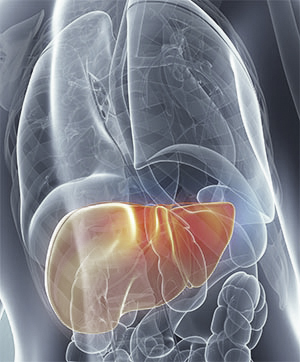Alcohol Effects
What is Alcohol?
Alcohol is classed as a depressant, meaning that it slows down vital functions—resulting unsteady movement, in slurred speech, disturbed perceptions and an inability to react quickly. As for as how it affects the mind, it is best understood as a drug that lowers a person’s ability to think rationally and distorts his or her judgment. Although it is classified as a depressant, the amount of alcohol consumed determines the type of effect it has on an individual. The majority of people drink for the stimulant effect, such as a beer or glass of wine taken to “loosen up.” But if a person consumes more than the body can handle, they then experience alcohol’s depressant effect.
 They start to feel “drunk” or lose coordination and control. Alcohol overdose causes even more severe depressant effects (inability to feel pain, toxicity where the body vomits the poison, and finally unconsciousness or, worse, coma or death from severe toxic overdose). These reactions depend on how much alcohol is consumed and how quickly the body is able to process it. There are different kinds of alcohol. Ethyl alcohol (ethanol), the only alcohol used in beverages, is produced by the fermentation of grains and fruits. Fermenting is a chemical process whereby yeast acts upon certain ingredients in the food, creating alcohol.
They start to feel “drunk” or lose coordination and control. Alcohol overdose causes even more severe depressant effects (inability to feel pain, toxicity where the body vomits the poison, and finally unconsciousness or, worse, coma or death from severe toxic overdose). These reactions depend on how much alcohol is consumed and how quickly the body is able to process it. There are different kinds of alcohol. Ethyl alcohol (ethanol), the only alcohol used in beverages, is produced by the fermentation of grains and fruits. Fermenting is a chemical process whereby yeast acts upon certain ingredients in the food, creating alcohol.
What are its Short Term Effects?
When an individual drinks alcohol, the alcohol is absorbed by the stomach, enters the bloodstream, and goes to all the tissues. The majority of effects caused by alcohol are dependent on a variety of factors, including a person’s weight, size, age, and sex, as well as the amount of food and alcohol consumed. The social effect of alcohol is one of the primary reasons it is used in so many social situations. Other effects of moderate alcohol intake include dizziness and talkativeness; the immediate effects of a larger amount of alcohol include slurred speech, disturbed sleep, nausea, and vomiting. Even at low doses, alcohol significantly impairs the abusers judgment and coordination required to drive a car safely. Low to moderate doses of alcohol can also increase the incidence of a variety of aggressive acts, including child abuse and domestic violence situations. Hangovers are another negative effect after large amounts of alcohol are consumed; a hangover consists of nausea, headache, thirst, dizziness, and fatigue.
What are its Long-Term Effects?
The prolonged, heavy use and abuse of alcohol can lead to addiction, also known as alcoholism. Sudden cessation of long term, extensive alcohol consumption is likely to produce withdrawal symptoms, including tremors, severe anxiety, hallucinations and convulsions. Long-term effects of consuming large quantities of alcohol, most often combined with poor nutrition, often leads to permanent damage to the vital organs such as the brain, kidneys, and liver. In addition, mothers who drink alcohol during pregnancy may give birth to infants with fetal alcohol syndrome. These infants may suffer from mental retardation and other irreversible physical abnormalities. In addition, research also indicates that children of alcoholic parents are at a much greater risk than other children of becoming alcoholics.
 Not all alcoholics are alike. They experience different degrees of impairment, and the addiction has different origins for different users. Consequently, many researchers have not found conclusive evidence that any one variable is solely responsible for the brain deficits found in alcoholics. Often characterizing what makes some alcoholics more vulnerable to brain damage and other alcoholics not remains the subject of active research. The good news is that most alcoholics with cognitive impairment show at least some improvement in brain structure and functioning within a year of abstinence from alcohol, though
Not all alcoholics are alike. They experience different degrees of impairment, and the addiction has different origins for different users. Consequently, many researchers have not found conclusive evidence that any one variable is solely responsible for the brain deficits found in alcoholics. Often characterizing what makes some alcoholics more vulnerable to brain damage and other alcoholics not remains the subject of active research. The good news is that most alcoholics with cognitive impairment show at least some improvement in brain structure and functioning within a year of abstinence from alcohol, though
some individuals take much longer. Clinicians must consider a variety of treatment methods to help people stop drinking and to recover from alcohol–related brain impairments, and tailor these treatments to the individual patient. Today’s advanced technology will have an important role in developing these therapies. Clinicians can use brain–imaging techniques to monitor the course and success of treatment, because imaging can reveal structural, functional, and biochemical changes in living patients over time. Which has shown promising new medications also are in the early stages of development, as researchers strive to design therapies that can help prevent alcohol’s harmful effects and promote the growth of new brain cells to take the place of those that have been damaged by alcohol.
Known Facts About Alcohol Addiction
- Alcohol is a depressant.
- Alcohol can cause both short-term and long-term effects.
- Even a small amount of alcohol can impair the judgment that is required to safely operate an automobile.
- Alcohol can, and often does, result in serious side effects if consumed with certain medications.
- Alcohol is very addictive. Many who drink socially can fall into the trap of addiction in just a few uses of it.
- One of the most well known facts about alcohol is that expectant mothers who consume alcohol may give birth to a child who suffers from Fetal Alcohol Syndrome.
- If consumed over a prolonged period of time, alcohol may cause damage to major organs, including the liver and/or the brain.
- In some states, one DUI (Driver under the Influence) charge may result in probation, jail time, license revocation, a fine or a combination of the aforementioned penalties.
- Drinking on an empty stomach may increase the likelihood of actually becoming drunk.
- Alcohol in the home is a temptation, so the removal of it will help to lessen the possibility of consumption.
- Prolonged consumption of alcohol may result in substantial weight gain which, in turn, can have negative effects on the heart.
For more information on alcohol addiction call Narconon at 800-468-6933. The Narconon drug and alcohol rehabilitation program treats alcohol addiction and achieves a more than 70% success rate for permanent sobriety.
For more information on alcohol and drug addiction click here.


